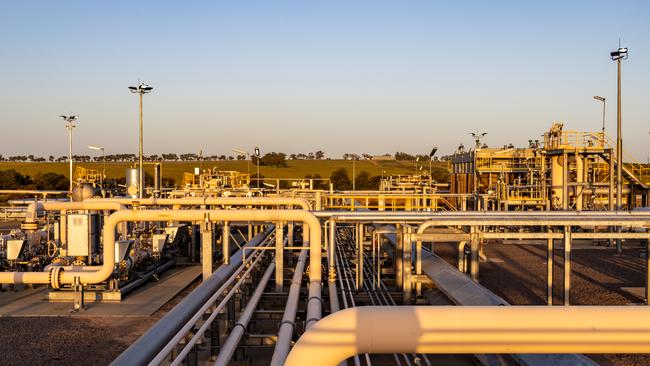Domestic gas trumps imported LNG to secure our energy future
A study shows that gas prices would be higher for both residential and industrial customers in Sydney, Melbourne and Adelaide if they relied on imported LNG rather than domestically sourced gas.

Australia’s build-out of renewables needs to accelerate. But we cannot decarbonise and speed-up the energy transition without gas.
Without gas, we’re at risk of higher costs and major disruptions to energy security. And without gas, we’ll be keeping coal and diesel generators in our systems for a long, long time.
In the same way, we must understand the science of climate change, we must also understand the science of energy.
In Australia, we can’t replace coal with renewables without gas if we want to ensure our energy system is reliable, affordable and low emissions.
Thankfully, we have started to see a shift in the public debate, with the role that gas plays in the energy transition becoming more widely understood and accepted.
The recent release of the federal government’s Future Gas Strategy is perhaps the best demonstration of this – acknowledging the central role of natural gas in firming renewables and powering our essential industries where alternative energy solutions are not yet available.
The strategy also underscores the need for new sources of gas supply to meet demand during Australia’s transition.
Unfortunately, however, this is yet to translate into action, with regulatory intervention and policy uncertainty getting in the way of investment in new energy sources and its associated infrastructure.
This lack of action means two things – first, a continuation of higher-emissions energy sources such as coal, and second, less reliable and less affordable energy options for Australian households and industry.

We are already seeing this play out across the country.
Just last month another coal fired power station – Eraring in NSW – had its life extended at a potential cost of up to $450m over the next two years, funded by Australia’s taxpayers. This follows two similar agreements in Victoria which extended the life of the Loy Yang A and Yallourn coal power stations – again, funded by taxpayers, although the amount has been withheld from the public.
Then there’s talk of prioritising Liquified Natural Gas (LNG) import terminals over domestic natural gas supply.
For a country so rich in natural gas resources, it’s a bizarre conversation to be having when we have new domestic sources of supply available. And as a recent report by Frontier Economics shows, importing LNG to meet our energy needs will only drive our energy prices higher.
The Frontier study looked at two scenarios: domestically sourced gas from either Queensland’s Bowen and Surat basins or the Northern Territory’s emerging Beetaloo Basin, transported to southern markets via new and existing pipelines; or internationally sourced LNG through two proposed LNG import facilities at Port Kembla in NSW and Geelong in Victoria.
The results showed that gas prices would be higher for both residential and industrial customers in Sydney, Melbourne and Adelaide if they relied on imported LNG rather than domestically sourced gas.
If LNG imports set the price for gas in winter, the median residential gas bill for a Victorian residential consumer would increase by about $143 *.
The impacts are notably more significant for industrial customers, which could face annual price increases of between 14 and 25 per cent for industrial consumers in Melbourne and Sydney if they were reliant on imported LNG during winter, to address supply shortages.
If LNG imports were to set the price of gas all year round, the cost implications are even worse. We could see hikes of between 55 and 100 per cent for industrial customers. This is clearly not a viable solution.
The Frontier report also shows that relying on imported LNG would expose the domestic wholesale market to global energy shocks. The Future Gas Strategy recognises this same risk.
It also takes a lot of energy to liquefy the gas before it is loaded on to an import vessel. This of course means that LNG imports will also have significantly higher emissions than domestically sourced gas.
Australia’s industries – many of which are dependent on gas and are competing on the world stage – can’t absorb higher costs. So we need to bring more domestic gas to market, and we need to do so as quickly as possible by removing the barriers to investment and putting in place the right policy and regulatory settings.
This is why the prospect of increased regulation and red tape across the gas pipeline sector, as an example, is so problematic for domestic gas prices.
Heavier regulation of gas pipelines is likely to both delay and constrain investment in new supply infrastructure. In turn, this is likely to lead to a dependency on LNG imported gas, rather than cheaper domestic gas. AEMO, Australia’s energy market operator, supports this view in its recent report, 2024 Gas Statement of Opportunities.
The fact is it’s domestic gas – not coal and not LNG import terminals – that will provide the lowest cost and most reliable solution for backing up our renewables on the journey to net zero and ensuring we continue to power Australian industry.
Adam Watson is CEO and managing director, APA Group.
-
* $143 per annum is APA’s estimate that references the median bill as per the Essential Services Commission Victoria, Victorian Energy Market Report, September 2023.
-
